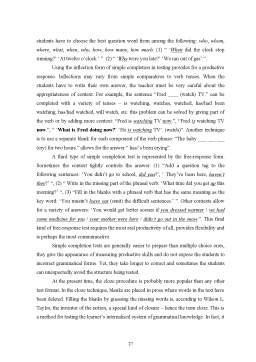Cuprins
- Introduction . 4
- Chapter I: Measurement, Tests, Evaluation . 6
- Chapter II: Uses and Classification of Tests .13
- Chapter III: Testing Language Subskills . 22
- Chapter IV: Testing Communication Skills . 46
- Conclusions . 76
- Bibliography . 77
Extras din proiect
INTRODUCTION
The purpose of this paper is to present theoretical and applied aspects of language testing within an educational system. My experience in teaching students of different ages, backgrounds and with different interests has taught me that tests play a very important part in the process of teaching and learning. Also, they can change someone’s life when used for evaluation purposes.
The first chapter of this paper clarifies the relationship between ‘measurement’, ‘tests’ and ‘evaluation’, three terms that are often used interchangeably. These concepts are presented together with their characteristics, with common points and differences. We learn that tests are an instrument of measurement and that the two intersect with evaluation.
With the second chapter, we concentrate on tests alone, yet the discussion remains at a theoretical level. In the first part of the chapter we analyse the many uses of tests, deriving from the two basic ones: (1) tests as sources of information for making decisions within the context of educational programmes and (2) tests as indicators of abilities or attributes that are of interest in research on language, language acquisition and language teaching. Types of tests observing different criteria of classification are presented in detail.
Chapter three contains the theoretical basis of language sub-skill tests, namely pronunciation, grammar and vocabulary. We go through tests for beginning, intermediate and advanced students, from very controlled to freer types of tasks and we see how they are constructed, administered, scored and used. In the end of each section we find actual tests given to different-level students together with their results and interpretations.
The fourth chapter is similar in structure to the previous one, but it presents tests of communication skills – reading, writing, listening and speaking. With each type of test we see the do’s and don’ts illustrated in many examples. The final part of each section contains experiments that are analysed, evaluated and scored.
Although it is not presented exhaustively, the picture of language tests is clearer at the end of this discussion. We see once again that there is a wide variety of types of tasks that can be employed to the benefit of both teachers and students. The range of tests that we, as teachers of the English language, make use of and the richness of contents and forms ultimately depends on our creativity.
CHAPTER I
MEASUREMENT, TESTS, EVALUATION
The purpose of this chapter is to introduce the fundamental concepts of measurement that contribute to the proper development and use of language tests. The three terms present in the title, ‘measurement’, ‘test’, ‘evaluation’, are often used synonymously because in practice they may refer to the same activity; for example, a test score can be seen as an evaluation of an individual’s language proficiency. Yet, they have distinctive characteristics that need to be analysed.
The social sciences define measurement as the process of quantifying the characteristics of persons according to explicit procedures and rules. The first feature mentioned above, quantification, implies the assigning of numbers, which distinguishes measures from qualitative descriptions such as verbal accounts or visual representations. Letter grades (‘A, B, C.’) or labels (‘excellent, good, average.’) may have the characteristics of measurement, yet, when we actually use them, we assign numbers to them in order to interpret them; it is only at this point that they become measurement.
In order to measure an attribute or ability of an individual, we need to determine what set of numbers will provide the best measurement. The sets of numbers that serve this purpose, together with the different ways of organising them, constitute the so-called scales of measurement. Before going any further, we need to provide the definition of ‘ability’; John B. Carroll (1983c, 1987a) proposed defining an ability with respect to a particular class of cognitive or mental tasks that an individual is required to perform, and a mental ability will refer to performance on a set of mental tasks. It is generally assumed that there are degrees of ability and that these are associated with tasks or performances of increasing difficulty or complexity (Carroll 1980, 1987a).
Preview document
Conținut arhivă zip
- Cuprins.doc
- Theoretical and Applied Aspects of Language Testing.doc





















































































